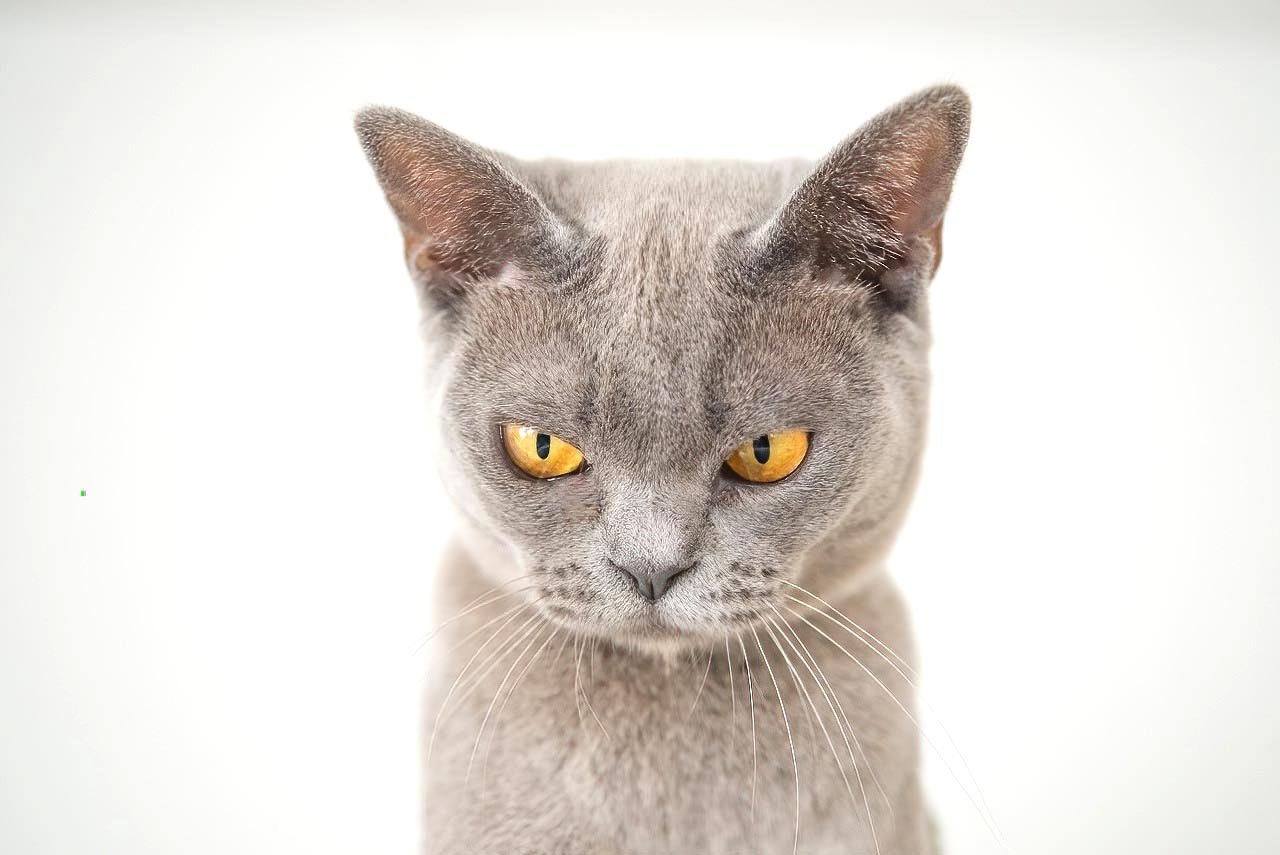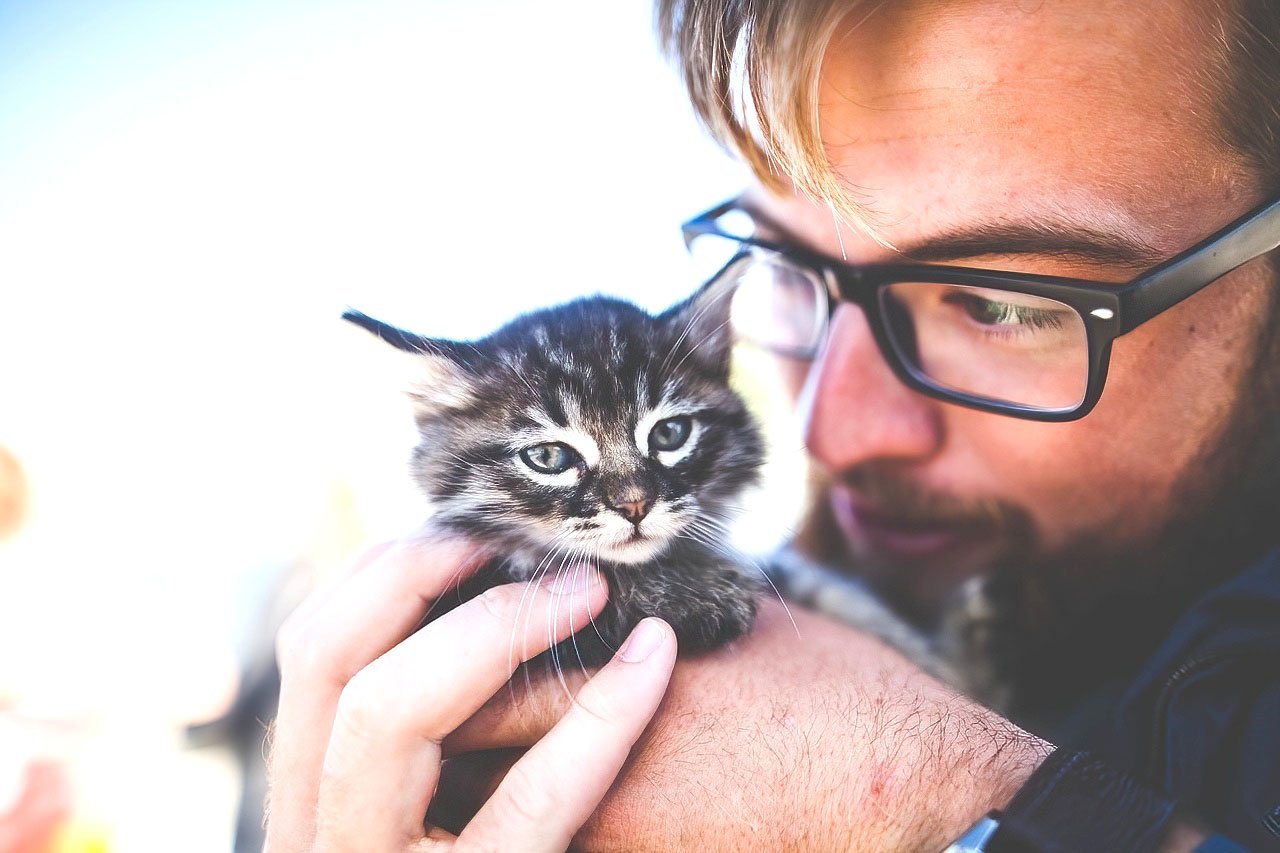As winter blankets the world in frosty hues, the safety of our feline friends becomes a paramount concern. Cats may be resilient creatures, but the cold weather can pose serious risks. In this blog post, we’ll explore the outdoor temperatures in winter that can be dangerous for cats and discuss measures to ensure their well-being during the chilly season.
Cats and Cold Weather Sensitivity
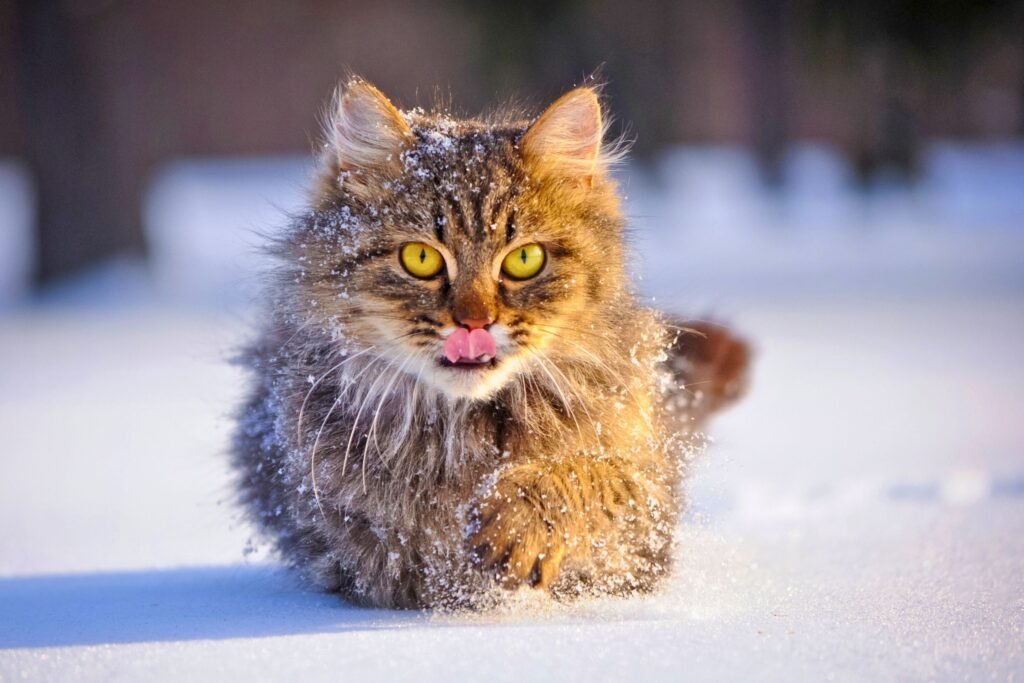
While cats are equipped with fur coats, they are not immune to the chilling effects of winter. The cold can impact their health, particularly if they are exposed to extreme temperatures for prolonged periods. Understanding their limits is crucial for responsible pet ownership.
Feline Fur and Insulation
Cats have a remarkable fur coat that provides insulation, but it’s important to note that their fur may not be sufficient protection in extremely cold conditions. Some cat breeds have thicker or longer fur, offering better insulation, while others may have shorter coats that provide less warmth.
Body Size and Age Considerations
Smaller and younger cats, as well as elderly or sick cats, may be more susceptible to the cold. Their bodies may struggle to regulate temperature effectively, making them prone to hypothermia or other cold-related health issues. It’s essential to pay special attention to these vulnerable groups during winter.
Wind Chill and Humidity Impact:
The combination of low temperatures, wind chill, and humidity can intensify the cold’s impact on cats. Wind can strip away the insulating layer of warm air around a cat’s body, making it feel even colder. High humidity levels can contribute to a cat’s discomfort by penetrating their fur and making them feel damp.
Behavioral Signs of Discomfort
Cats may not always display overt signs of discomfort in cold weather. Some may try to hide their vulnerability, making it crucial for pet owners to observe subtle behavioral changes. If a cat is reluctant to go outdoors, curls into a tight ball, or seeks warmth more frequently, it may indicate that the cold is affecting them.
Adaptation and Acclimatization
Cats, like many animals, can adapt to cooler temperatures over time. However, sudden drops in temperature or exposure to extreme cold without adequate acclimatization can still pose risks. Gradual introduction to colder weather and monitoring their response can help cats adjust more comfortably.
Understanding the nuances of a cat’s sensitivity to cold weather involves considering their individual characteristics, monitoring behavioral cues, and being aware of environmental factors. Responsible pet owners should take proactive measures to ensure their feline companions are protected from the adverse effects of winter, promoting their overall well-being during the colder months.
The Danger Zone: When is it Too Cold?
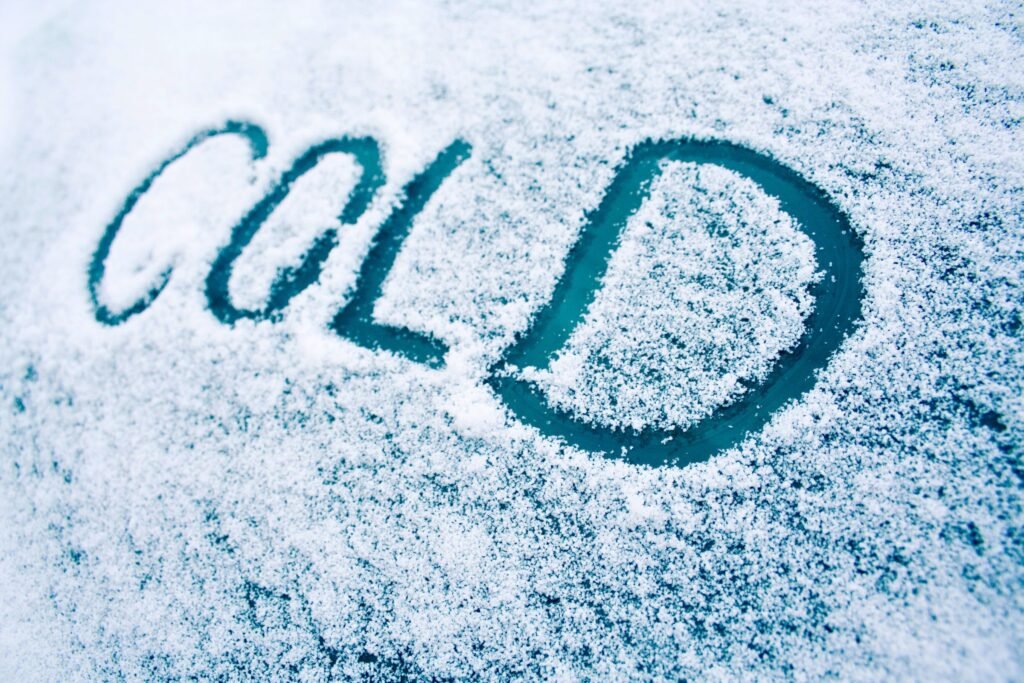
As a general guideline, temperatures below freezing (32°F or 0°C) pose a significant risk to cats. Frostbite and hypothermia become real concerns at these low temperatures. Factors such as wind chill and humidity can exacerbate the cold’s impact, so it’s essential to consider the overall weather conditions.
Frostbite Risk and Temperature Extremes
Frostbite occurs when the skin and underlying tissues freeze, usually affecting the extremities such as ears, paws, and the tail. Cats are susceptible to frostbite in extremely cold conditions, and prolonged exposure to temperatures below freezing increases this risk. Monitoring weather forecasts and avoiding outdoor activities during severe cold snaps can help prevent frostbite.
Hypothermia and Its Onset
Hypothermia, a potentially life-threatening condition, can occur when a cat’s body loses heat faster than it can produce it. The risk of hypothermia increases in temperatures below freezing, especially when combined with wet or windy conditions. Signs of hypothermia in cats include shivering, lethargy, and difficulty moving. Immediate veterinary attention is crucial if hypothermia is suspected.
Wind Chill Factor
Wind chill refers to the cooling effect of the wind on the perceived temperature. Even if the actual temperature is above freezing, the wind can make it feel much colder. Cats may be more susceptible to cold-related issues when wind chill is a factor, as it can strip away the insulating layer of warmth provided by their fur.
Humidity Influence on Cold Perception
High humidity levels can contribute to a cat’s discomfort in cold weather. Humidity can make their fur feel damp, reducing its insulating properties. Wet fur loses its ability to trap air and provide warmth, making the cat more vulnerable to the cold. Cats in high humidity areas may experience greater discomfort at lower temperatures.
Monitoring Weather Conditions
Responsible pet owners should pay attention to weather forecasts, taking into account not only the temperature but also wind speed, wind chill, and humidity levels. Avoiding outdoor activities during extreme weather conditions and providing indoor alternatives for exercise and stimulation can help protect cats from the dangers associated with the cold.
Special Considerations for Vulnerable Cats
Cats with pre-existing health conditions, older cats, kittens, and breeds with short fur may be more susceptible to the cold. Special attention and precautions, such as limiting outdoor exposure during colder days or providing extra layers of protection, should be taken for these vulnerable individuals.
Understanding the specific risks associated with cold temperatures and considering the additional factors of wind chill and humidity enable pet owners to make informed decisions about their cats’ well-being during the winter months. Regular monitoring and swift action in response to adverse weather conditions can help ensure the safety and health of our feline companions.
Signs of Cold Stress in Cats
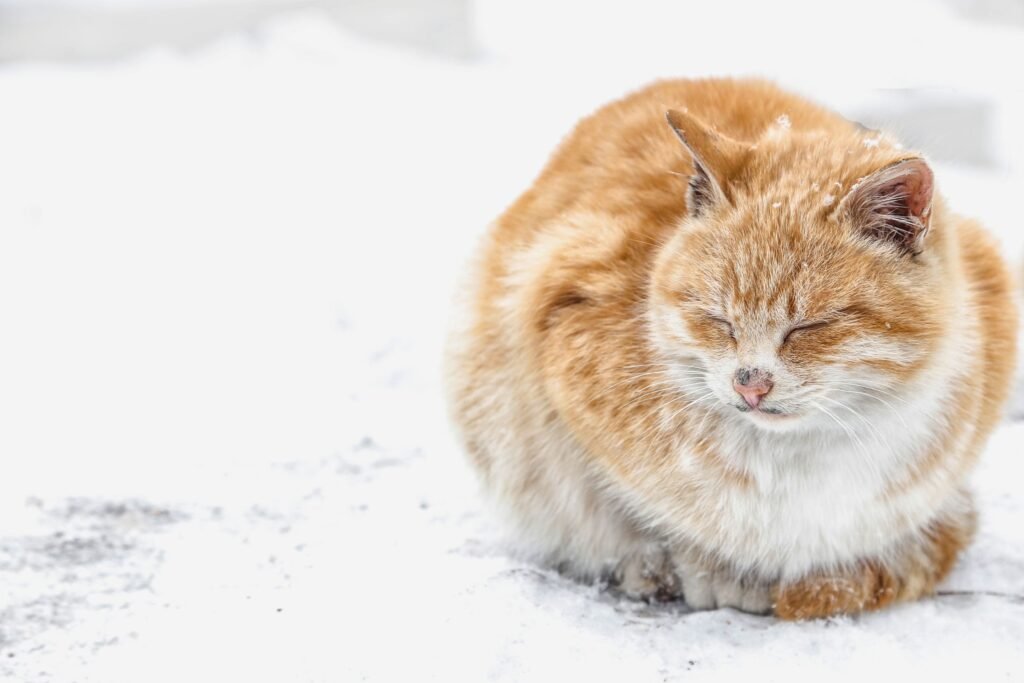
Cats may not exhibit obvious signs of distress in cold weather, making it imperative for pet owners to be vigilant. Watch for signs of shivering, lethargy, or seeking warm spots. These may indicate that your cat is struggling with the cold and needs immediate attention.
Shivering and Body Language
Shivering is a clear sign that a cat is feeling cold. If you notice your cat trembling or shivering, especially in cold weather, it’s a signal that they are attempting to generate heat to maintain their body temperature. Additionally, pay attention to changes in body language such as hunching or curling up tightly, which are ways cats conserve body heat in response to the cold.
Lethargy and Reduced Activity
Cold temperatures can lead to lethargy in cats. If your usually active cat becomes unusually sluggish or reluctant to move, it could be a sign of cold stress. Reduced activity is a mechanism cats use to conserve energy when facing challenging environmental conditions.
Seeking Warmth
Cats experiencing cold stress may actively seek out warm spots in your home. This could include curling up near heaters, vents, or any source of warmth. If you find your cat consistently gravitating towards warm areas or trying to snuggle in blankets, it’s an indication that they are struggling to maintain their body temperature.
Changes in Behavior and Vocalization
Cats may exhibit changes in behavior when they are uncomfortable. Increased vocalization or meowing, especially when combined with other signs of distress, could be a way for the cat to communicate their discomfort. Some cats may seek attention more than usual, signaling their need for warmth and comfort.
Cold Ears and Paws
Physically check your cat’s ears and paws for signs of cold stress. If these areas feel excessively cold to the touch, it could indicate that your cat is not adequately protected from the cold. Cold extremities can be a precursor to more severe issues like frostbite.
Changes in Eating Habits
Cold weather may impact a cat’s appetite. Some cats might eat less when they are cold, leading to weight loss or nutritional imbalances. Monitor your cat’s eating habits, and consult with a veterinarian if you notice significant changes, as maintaining proper nutrition is crucial for their overall well-being.
Inappropriate Elimination
Cats may avoid going outside to use the litter box if it’s too cold, leading to inappropriate elimination indoors. If your cat starts exhibiting this behavior during winter, it could be a sign of their discomfort with the cold weather.
Being attentive to these signs allows pet owners to identify and address cold stress in their cats promptly. Providing warm and comfortable spaces indoors, ensuring access to cozy bedding, and limiting outdoor exposure during extreme cold weather can help mitigate the risks associated with chilly temperatures. If you observe persistent signs of cold stress, consulting with a veterinarian is advisable to ensure the health and welfare of your feline companion.
Providing Shelter and Warmth
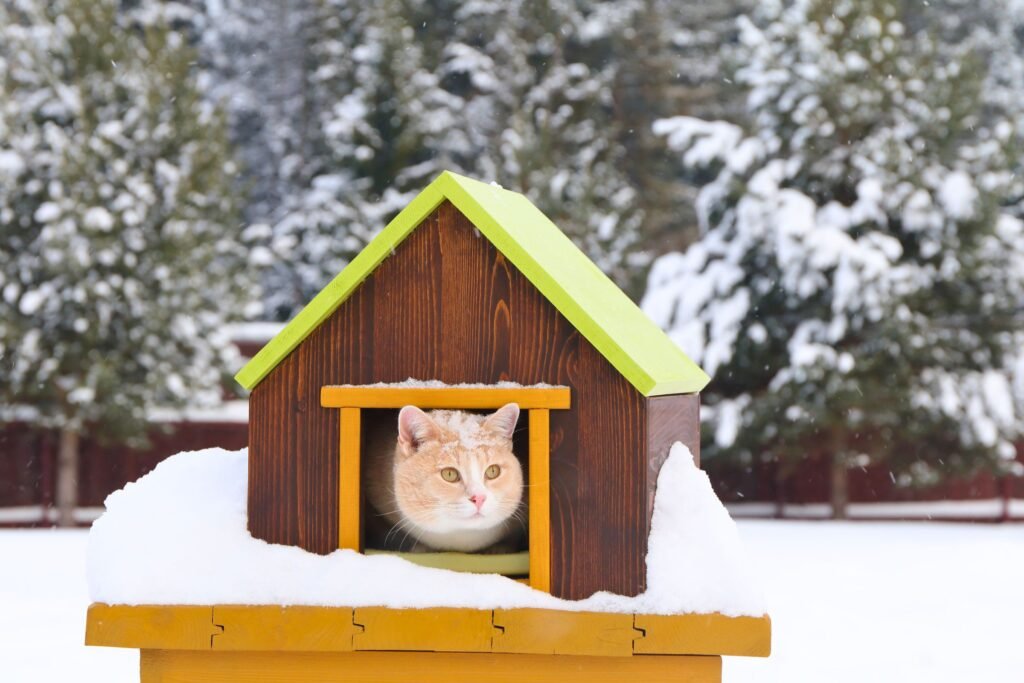
If your cat enjoys outdoor excursions, ensure they have access to a sheltered and warm area. Provide cozy bedding, insulated shelters, or even a heated outdoor cat house to offer a refuge from the cold. Monitoring their time spent outdoors is key to preventing cold-related health issues.
Outdoor Shelter
Provide your cat with a well-insulated outdoor shelter that protects them from the cold, wind, and precipitation. The shelter should be elevated off the ground to prevent moisture and drafts. Consider using materials that retain heat, such as wood or insulated plastic. A small entrance can help trap heat inside while keeping out the elements.
Cozy Bedding
Place warm and comfortable bedding inside the outdoor shelter. Blankets, thermal pads, or specially designed heated pet beds can provide extra warmth. Make sure the bedding is kept dry and clean, as dampness can negate its insulating properties.
Heated Outdoor Cat House
In extremely cold climates, consider investing in a heated outdoor cat house. These houses come equipped with built-in heating elements that maintain a moderate temperature inside, ensuring your cat stays warm even in freezing conditions. Always follow safety guidelines and manufacturer recommendations when using heated products.
Windbreaks and Enclosures
Create windbreaks around your outdoor space to minimize the impact of chilling winds. This can involve using barriers like tall plants, boards, or other structures. Additionally, consider enclosing part of the outdoor area to provide a more sheltered space for your cat to explore without being fully exposed to the cold.
Monitoring Outdoor Time
Keep a close eye on the duration of your cat’s outdoor activities, especially during colder weather. Limit their time outdoors in extreme conditions to reduce the risk of cold-related health issues. If your cat appears uncomfortable or exhibits signs of cold stress, bring them indoors promptly.
Provide Indoor Alternative
Encourage your cat to spend more time indoors during the winter by creating a warm and stimulating environment. Set up cozy spots with blankets or heated beds inside your home. Interactive toys and play sessions can also help keep them active and engaged indoors.
Regular Health Check-ups
Schedule regular veterinary check-ups, especially during the winter months, to assess your cat’s overall health. Cold weather can exacerbate existing health issues, so early detection is crucial. Discuss any concerns about their behavior or well-being with your veterinarian.
Grooming for Winter
Maintain your cat’s coat in good condition for better insulation. Regular grooming helps remove excess fur and mats, allowing their natural insulation to be more effective. However, avoid excessive bathing in winter, as it can strip their fur of essential oils that provide insulation.
By implementing these measures, you can create a safe and comfortable outdoor environment for your cat during winter. Remember that each cat is unique, so observe their behavior and preferences to tailor your approach to their specific needs. Providing adequate shelter and warmth ensures that your feline friend can enjoy the outdoors while minimizing the risks associated with cold weather.
Conclusion
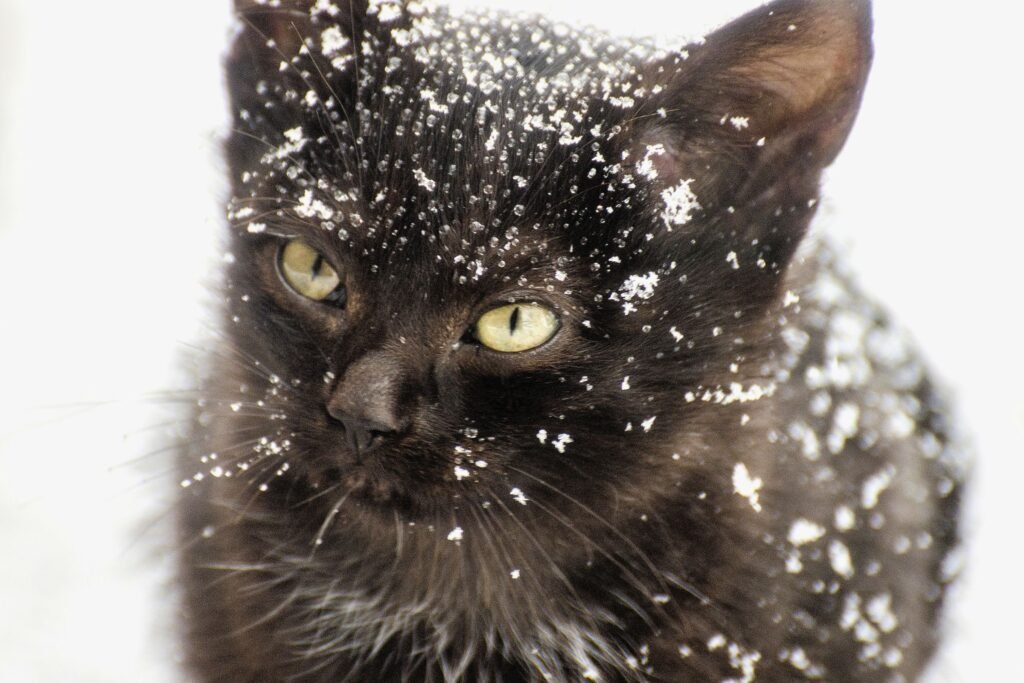
Understanding the outdoor temperatures that can be dangerous for cats in winter is crucial for responsible pet ownership. By being aware of the risks, recognizing signs of distress, and providing adequate shelter and warmth, you can ensure your feline friend stays safe and comfortable during the chilly months.
As the winter chill sets in, remember that each cat is unique, and their tolerance to cold can vary. Paying close attention to your cat’s behavior, promptly addressing signs of discomfort, and adapting your care practices accordingly will contribute to their overall well-being. By fostering a warm and secure environment, both indoors and outdoors, you can create a winter haven for your feline companion, allowing them to enjoy the season safely and happily. Stay attuned to their needs, and your cat will navigate the winter months with the warmth and care they deserve.



